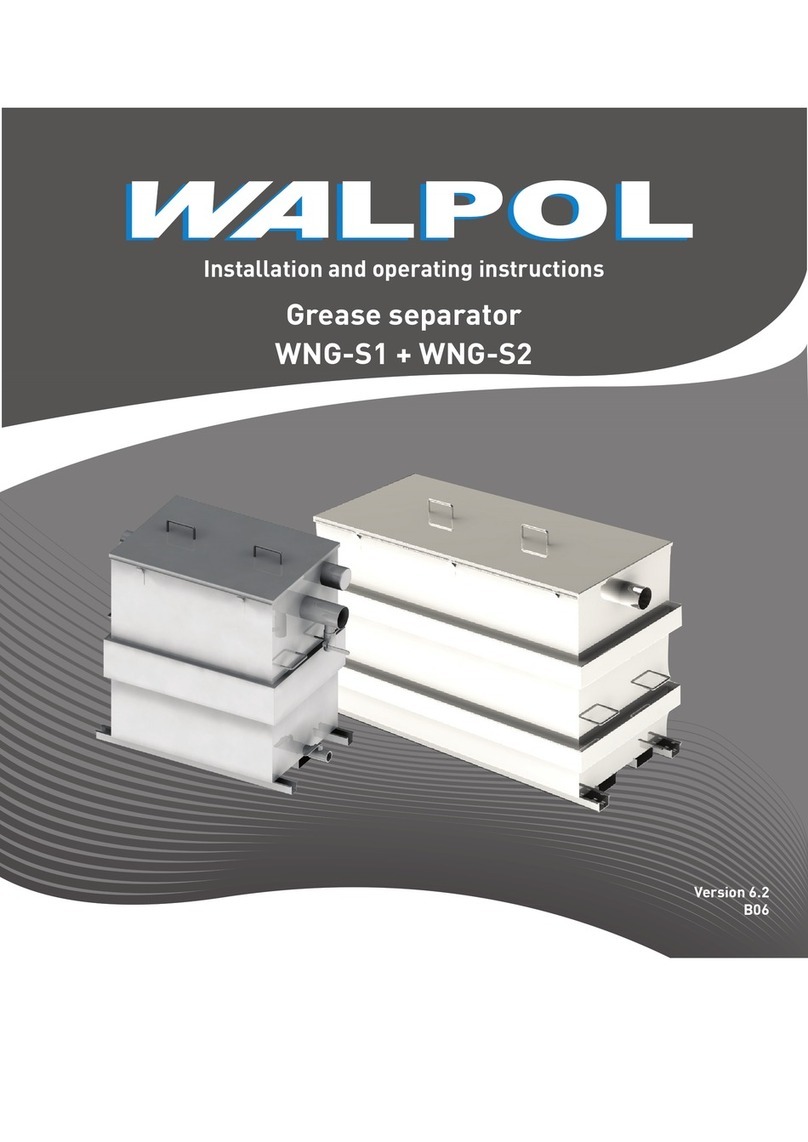
3
1. General information
For reasons of clarity, this operating manual does not contain all the detailed information and can not cover every concei-
vable case of adjustment, operation or maintenance.
Should you require further information or problems occur that are not listed in the operating instructions, please contact
our customer service with confidence. Changes that serve technical progress are reserved!
1.1. Notice Symbols
Gefahr
Direct hazard
Failure to comply with this warning will lead directly
to death or serious injury.
Caution
Hazard with a low risk
Failure to comply with this warning may lead to
moderate injuries.
Warning
Potential hazard
Failure to comply with this warning may lead to death
or serious injury.
Important
Hazard with risk of damage to objects
Failure to comply with this warning will lead to
damage to objects
Note
Useful information and instructions.
2. Important safety information
Planners, property owners, specialist companies and operators must then prove that all standards, guidelines, laws have
been observed.
• Read the operating instructions completely and carefully.
• Keep the operating instructions and other valid documents with the grease separator. They must always be available at
the place of use.
• Observe and respect local conditions, regulations and laws
• Abide by the system-related conditions and requirements of the system manufacturer or plant constructor
• The grease separator may only be used if it is in perfect condition.
• The generally prescribed electrical and mechanical protective devices must be provided.
• During assembly, electrical connection, commissioning, troubleshooting, debugging and maintenance, secure the
assembly site and the premises to prevent unauthorized access.
• Make sure that all warning labels on the grease separator are complete and legible.
• This device is not intended for use by persons (including children) with limited physical or mental capabilities or
without experience and prior knowledge, unless such persons have been instructed in the use of the device by a
person responsible for their safety.
• Children are not allowed to play with the device.
2.1. General notes (excerpt of DIN EN 1825-2)
• Only waste water containing fats and oils of vegetable and animal origin may be discharged into the grease separator.
• Existing drainage pipes must be checked for a suitable connection height.
• The materials of the inlet and outlet pipes must comply with DIN EN 12056 and be resistant to waste water in
accordance with DIN EN 1825-2. The required pipe cross-section depending on the nominal size of the separator must
be observed.
• The wastewater is to be fed to the separator system in a free gradient. If the still water level of the separator is below
the backflow level (see EN752-2), water must be drained using a lifting system.
• In order to prevent grease deposits in the supply lines to the grease separator, they must be laid with a gradient of at
least 2% (1:50) and must be easy to clean.





























